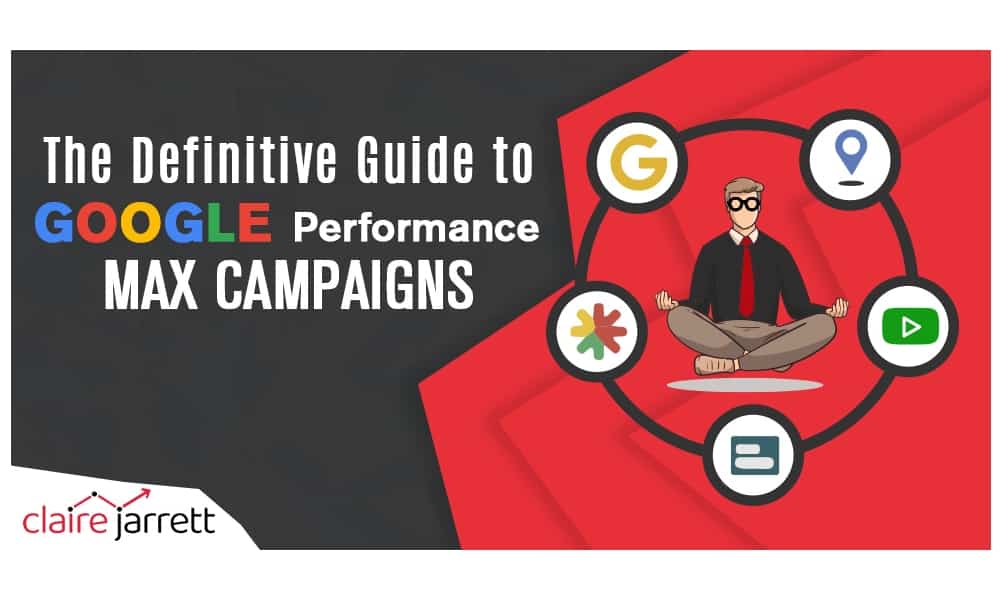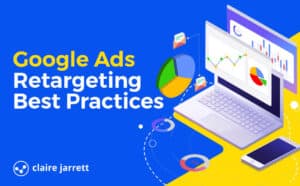The Ultimate Guide to Google Ads Performance Max Campaigns [Updated in 2025]

Last Updated on: 24th June 2025, 03:10 pm
Traditional Google Ads are a simple machine: insert your keywords and Google will serve them. But with Google Ads Performance Max campaigns, the machine has started learning.
You get more data and placement options but fewer control levers. So, today, I’ll show you everything about setting up and optimising your Google Ads performance max campaigns. Plus, you’ll learn what not to do.
Let’s take a look!
What Are Google Performance Max Campaigns?
Performance max campaigns (pMax) are an automated Google Ads campaign type. Unlike traditional ads, where you have 1 campaign per channel, Performance Max lets you share a single campaign across different channels:
- YouTube
- Search
- Display
- Discover
- Gmail
- Maps
Instead of focusing on clicks, the Performance Max campaign type concentrates on goals, conversions, and acquisitions. Google’s AI learns from your campaign and existing profitable audiences to find more people like them and expand your market for you.
In the hands of a Google Ads specialist, pMax campaigns can drive phenomenal results. But if you’re not careful, you might end up optimising for the wrong thing.
The Problem with Performance Max Campaigns
Performance Max campaigns look easy to set up. I’ve seen plenty of business owners jump in headfirst and hand the reins to Google.
For its part, Google doesn’t do much to dissuade you. Complete black-box automation has been Google’s goal for a while now, and Performance Max is another step in that direction, removing controls over specific channels or keywords.
But even though Google now learns from your campaigns, you shouldn’t let it run free.
Are You Optimising for the Wrong Intent Level?
Every Performance Max placement channel has its place in your customers’ conversion journey.
For example, YouTube ads can increase awareness for the top-of-the-funnel prospects. On the other hand, Search shows your ads to people who are ready to buy (bottom-of-the-funnel).
If you try to optimise for all these intents at once, you’ll optimise for none.
Customers at every funnel stage have different needs, so if you optimise for lower-level conversions, your campaign might go badly wrong. The intent to purchase isn’t strong enough.
You’ll get low-quality leads and higher costs per click.
Thankfully, Performance Max has also upgraded its functionality in 2025 to include retention goals and the ability to refine targeting with more than just intent levels.
Be Careful with Performance Max Campaign Cannibalisation
If you run a standard, one-placement-channel campaign and a Performance Max campaign simultaneously, Google might display your pMax campaign instead of your standard campaign.
In the table below, you’ll see which campaign “wins” and gets served when competing with your Performance Max campaign.
Traditional Google Ads vs Performance Max Campaign Priority
| Campaign competing with Performance Max campaign | Google serves |
| Smart shopping | Performance Max |
| Shopping | Performance Max |
| Display Dynamic Remarketing | Performance Max |
| Search – exact match | Search |
| Search – not an exact match | Determined by AdRank |
If you run both Search and pMax, your Search campaign will win the bidding war only if searchers look for one of your specific Google AdWords keywords. Otherwise, Google will use the AdRank score to decide who wins.
Performance Max Campaigns Don’t Offer As Many Channel Budgets & Placement Exclusions
What happens if you realise one of your pMax channels attracts higher-quality leads and another sends you time-wasters?
Nothing until Google catches on.
Unfortunately, you can’t exclude channels or adjust budgets per channel just yet (although you do get device controls), but you can separate your asset groups according to intent to make the most of each channel. Similarly, you can blocklist some of the sites your ads could be placed on through the “Brand Suitability” feature.
I’ll also walk you through the best bidding strategies and conversion goals, so Google’s AI knows precisely which type of users it should target.
Negative Keywords
Initially, you couldn’t exclude search terms that didn’t generate conversions for your Performance Max ads. However, due to recent updates, you can now add account-level negative keywords to your pMax campaigns. This is a nice control lever that prevents Google from wasting your budget on low-quality leads.
Keep in mind that these negative keywords won’t apply to Discovery campaigns!
Similarly to pMax cannibalising campaigns, you’ll notice pMax can steal your brand traffic. The best way around it is to bid higher on your brand campaign.
Why You Should Still Consider Performance Max Campaigns
I’ll be honest: I’m not a fan of Google Ads’ automation. A few of my Google Ads coaching clients switched to me because their agencies forgot to tick off small automation settings, resulting in a massive waste of their budgets.
However, we can’t deny that Google is automating more and more. It also has access to valuable advertising data. And, when it’s paired with a PPC expert, the AI produces excellent results:
Performance Max Identifies Profitable Audiences You Hadn’t Considered
Performance max targeting is powerful. Think Facebook lookalike audiences.
After all, there’s no doubt that Google has a lot of data on everyone’s search terms.
(They might even know we want to buy a house before we’re ready to look at the listings.)
So, after you add your audience signals (including the terms they’ve previously searched for and websites they visited), Google will learn from your campaign performance and find other audiences that might be profitable.
That’s what I mean when I say Performance Max can expand your market for you.
For example, if you own a construction company, you don’t have to just target people who are searching for “a construction company near me.” You can reach people who looked for “surveyor services” in the past 14 days (without sacrificing your Quality Score).
Performance Max targets conversion actions instead of targeting search terms. It serves your ads to people who have the highest likelihood of converting based on different data points.
Asset Groups Provide More Conversion Options
Just like responsive search ads, you can upload multiple assets to your Performance Max campaigns.
Then, Google will test multiple asset combinations. You can significantly increase your conversion rate if you structure your Performance Max campaign account correctly. After 2025 updates, we’re also seeing better experiment options for Performance Max assets.
Discover New Copy and Creatives that Resonate with Your Leads
Another reason to consider Performance Max for your Google Ads is the AI-improved Search Inventory optimisation. pMax allows you to combine broad match keywords with Smart Bidding to find new opportunities.
Again, the insights aren’t as granular – but they are getting better with pMax updates, so be careful to test in a controlled environment.
Fill in the Knowledge Gaps with Search Themes
Performance Max’s AI may be powerful, but you know your audience best. That’s why Google, starting from 2025, allows you to add up to 50 of the so-called “search themes” to each pMax ad.
Think of search themes as phrase or broad match keywords, there to help Performance Max understand your audience and the way they search better. For example, if you know of some data that’s not displayed on your landing pages or keywords that Google hasn’t thought to add to your campaign targeting, use search themes to fill in the blanks.
(This is especially helpful when you first launch a pMax campaign and there’s no historical data for Google Ads to base its predictions on.)
How to Set Up Your Performance Max Campaign
Step 1. Define Your Performance Max Campaign Objective, Type, and Conversion Goals
You can launch your Performance Max campaign from the Google Ads Manager:
- Choose your objective -> “Create a campaign without a goal’s guidance.”
- Select a campaign type -> “Performance Max”
Performance Max Conversion Goals
Come as close to the actual conversion event as possible (e.g., adding to the cart) and pause anything that’s not a direct conversion (e.g., mailing list sign-up).
When you pause secondary conversion actions, you’ll still be able to monitor them, but they won’t be treated as conversions.
This has twofold benefits: firstly, you want to make sure your settings are precise so Google’s AI doesn’t accidentally optimise your account for non-converting actions.
Secondly, Performance Max is by nature a conversion-first ad type. It wants to learn which people convert on your website. Even if you run a lead generation campaign, you can use Enhanced Conversions for Leads to make the data as precise as possible.
Learn how to set up Google Ads conversion tracking in my in-depth guide.
2. Set Your Performance Max Budget & Bidding
The golden rule of Performance Max is experimentation. Google’s AI needs a lot of data to optimise your campaigns, which means a lot of clicks. So, if you run ads without expert help and don’t have a budget of at least $2,000 per month, opt for a traditional Google Ads campaign instead.
At the very least, your daily Performance Max budget should be 3-5x your cost per conversion (for the campaign conversion goals).
For example, if your cost per conversion is $10, your daily budget should be at least $30.
Performance Max also has the “Budget Pacing” feature, which you can use to understand how your budget is distributed across campaigns. Personally, I don’t find this really useful since it’s not as granular as traditional campaigns, but it could give you some insights into how Google is distributing your money.
Performance Max Bidding
Since Performance Max is all about performance, use Maximise Conversions or Maximise Conversion Value as your bidding strategy.
You can set a target CPA or a target ROAS with both.
For example, if you own an online shop, target a higher Average Order Value with the Maximise Conversion Value bidding strategy to get higher returns on your ad spend.
Step 3. Final URL Expansion
Final URL expansion lets you choose if you want Google to send traffic to a specific page you selected or leave it for the AI to decide.
If you choose the latter, Google’s AI will experiment with different landing page URLs to maximise conversions.
For example, your plumbing ad may send leads to your plumbing services landing page, your ‘About’ page, or a different page entirely.
Step 4. Performance Max Asset Groups and the Ideal Campaign Structure
Performance Max’s asset groups are similar to ad groups and responsive search ads. Like RSA, you provide the ad assets, and Google tests them to determine the winning combination.
Performance Max Asset Types
You can add plenty of assets to your campaigns, including logos and videos:
| Performance Max asset | Limit |
| Headline | Up to 5 |
| Long headline | Up to 5 |
| Description | Up to 4 |
| Display URL path | Up to 2 |
| Images | Up to 15 |
| Logos | Up to 5 |
| Videos | Up to 10 |
Videos are required. If you don’t upload a YouTube video of your own, Google will generate one for you.
Google’s video won’t be anything to write home about. Most of the AI-generated videos for pMax will look like a two-hour Windows Movie Maker project. So even if video isn’t your top acquisition format, hire a freelancer or use a tool like Lumen5. Don’t waste the click, especially since most of your Performance Max competitors are cutting corners and avoiding high-quality videos.
How to Organise Your Performance Max Asset Groups
If you target different audience segments (e.g. enterprises and small businesses), set up two campaigns rather than two asset groups.
Then, organise asset groups by audience signals.
For example, you might target the audience’s search history with one asset group and demographics with the second.
Target the right intent level by mapping audience signals to your asset groups. If you try to optimise for different intent levels simultaneously, you’ll see lower performance across your campaign.
You’ll get significantly better results if you create different asset groups for different funnel stages:
- Top-of-the-funnel (unaware, targeted with previous searches or downloads)
- Middle-of-the-funnel (problem-aware but not thoroughly convinced, targeted with detailed demographics and interests)
- Bottom-of-the-funnel prospects (solution-aware, targeted with your first-party or remarketing data)
The key is not to mix them up. Remember: optimising for everything means not optimising for anything in particular.
A Note on Automatically Created Assets (ACAs)
Since Google is going all-in on AI, there’s an option for it to create your assets for you. Don’t agree to it blindly.
With ACAs in Performance Max, Google can auto-generate descriptions and headlines for your ads. This is a nice idea in theory, but, in practice, it could lead to some overlap if Google were to, for example, generate a headline that doesn’t match any of your descriptions.
If you do test, test carefully! And if you decide this option works for you, make sure your landing pages don’t contain any copy that could be misinterpreted or images that you wouldn’t like to use in your ads.
Step 5. Targeting with Audience Signals
Unlike traditional Google Ads, Performance Max campaigns have a combination of different audience signals:
- Custom segments (target prospects based on their search activity, app installs, website visits)
- Your own customer data (remarketing lists, CRM lists, Customer Match, etc.)
- Interests & detailed demographics (target prospects based on their demographic makeup, interests, life events, etc.)
- Demographics (gender, age, parental status, etc.)
For example, if you’re a real estate agent, you could target people who recently visited websites like Zoopla or Zillow with custom-segment targeting. Yes, even if you’re not the website owner!
How Do I Add Keywords to Performance Max Campaigns?
You can’t add keywords to Performance Max campaigns directly. However, you can add search terms under ‘custom segments.’
Keep in mind that your pMax ads may not be served to these specific audiences. Google employees say it’s best to use audience signals as starting points.
Then, the AI will find shared characteristics between your existing profitable audience and new audiences who behave the same way.
Step 6. Ad Extensions
Performance Max doesn’t offer unique ad extensions but add all the relevant ones to get more SERP real estate. Don’t overdo it. Keep all the extensions relevant and ensure they match different asset combinations.
You Still Can’t Let Google Manage Your Campaigns for You
Performance Max is interesting, but it’s no substitute for thorough audience research.
You need to understand your primary audience to give Google the signals it needs to find other audiences ready to convert.
Don’t rush into new ad types without discussing your strategy with a freelance PPC consultant. New ad types are experimental, so be careful and double down on already profitable campaigns to maintain steady revenue.
You can always set aside a portion of your budget for new ad types and try them when you’re ready.
Remember that the key to your advertising success is a deep understanding of your buyer’s journey and a clear value proposition that sets you apart.
And once you’re ready to launch your pMax campaign, keep a close eye on it and optimise accordingly.
How to Optimise a Performance Max Campaign
Asset Optimisation
Performance Max displays asset quality scores. Check them regularly to remove assets rated as Low and learn from the Best assets.
Add unique creatives. There are many options, so it may get overwhelming, but your ad creatives are the foundation of your success. If you’ve been running your Performance Max campaign for a while, update your assets to promote new offers or test different ad copy.
How to Optimise Search Themes in Performance Max
You won’t get much data on keywords served per channel, and pMax won’t always honour your negative keywords. Still, review and optimise them as much as possible.
For example, if you see that your campaigns appear for terms that have no chance of generating leads, add them to your negative keywords list.
Similarly, you can add search themes to your campaigns (AKA: your own keywords), but they won’t be treated as exact match.
Always take Google’s suggestions with a grain of salt and stay on the lookout for obvious budget-wasters.
A/B Test URL Expansion
If you launched your campaign with a specific final URL, try letting Google select the landing page for you in a controlled experiment.
Add the necessary exclusions or exclude everything except the options you’d like Google to test.
How to Optimise Your Performance Max Campaign Structure
Optimise your campaign for the highest purchasing intent if you want to drive more sales.
Don’t cast a wide net unless you can wait to see results, as it takes 30-60 days for pMax to learn enough about your audience and start delivering higher ROI.
Unfortunately, Google doesn’t allow you to exclude bad placements. If some pMax placements don’t work for your business (e.g., YouTube or Display), optimise for the best-performing placements or consider running a traditional campaign.
Optimisation for eCommerce
Most of the advice in this guide applies to eCommerce. However, there are two significant differences:
- Performance Max campaigns sync with your Merchant feed.
- If you only upload your product feed (and no other assets like text, videos, or images), your pMax eCommerce campaign will be placed only on Google Shopping.
If a product is out of stock, update your product feed. Don’t waste clicks on products your audience can’t buy. Alternatively, link to similar products from the product page, especially if you have a close variant of the out-of-stock product.
eCommerce pMax Campaign Structure
Treat asset groups as product groups and make sure there’s no overlap. Group advertised products according to categories and sub-categories.
For example, women’s Nike trainers can be one asset group with all their different variations, and women’s Adidas trainers another.

You can select products you want to advertise with the campaign. If some don’t fit the creative or simply don’t perform well in your Performance Max campaigns, remove them.
Custom Labels in the Performance Max Era
If you’ve previously used Smart Shopping, forget what you learned about product-level custom labels. Performance Max asset groups for eCommerce function as product groups; you won’t be able to add dedicated labels.
In general, Performance Max doesn’t offer the granularity you’ve seen with Smart Shopping, so tread carefully and don’t discount your other campaigns just yet.
Audience Signals for eCommerce
If your first-party data is granular (e.g. you sell women’s and men’s shoes, and you’ve separated your audience list according to their purchasing preferences), import it into Performance Max campaigns.
Since pMax removes optimisation options we’re familiar with, do everything you can on your end to have crystal-clear data.
If you don’t have first-party data, you’ll still have other audience signals you can use, including targeting people who visited specific websites or searched for certain terms.
Best Practices for Performance Max Campaigns
- Set up conversion tracking to know what’s working (and what’s not).
- Add search themes that Google’s AI is missing and monitor if the search themes are sending you new traffic or not.
- Test the changes, including different ad formats, including text, images, videos, and responsive display ads.
- Use your previous campaigns’ audience insights to scale what works through pMax.
- Regularly evaluate Google’s ad strength indicator and aim for “Excellent.”
- Align ad content with landing page content to increase your Quality Score and decrease your CPC.
- If you constantly run ads, rotate the creatives to prevent audience fatigue.
- Experiment with video enhancements in Performance Max carefully.
- Test videos in the Search (only allowed through pMax for now).
- Don’t auto-apply recommendations.
- pMax is constantly getting new transparency features – stay updated on them!
- Consider running Performance Max tests against the older campaign types.
When Should You Use Performance Max Campaigns?
You might get disappointed if you approach Performance Max campaigns from the traditional Google Ads standpoint. pMax campaigns look simple on the outside, but you’ll find a complex machine once you dive into your ad account.
Should you let Google take over or spend more time analysing your campaigns?
The latter.
Work with the AI to find the best advertising fit for your business. Provide your initial research as audience signals, and then closely monitor your campaigns to ensure you see the highest possible returns.
Performance Max campaigns take time and consideration. I wouldn’t recommend them if you’re DIY-ing your advertising. There are still too many intricate details to make them first-timer-friendly.
But in the hands of a seasoned Google Ads professional, Performance Max can be a powerful revenue tool.
If you’d like to get more sales with Google Ads, get in touch with me. I’ve helped 1000s of business owners since launching the first Google Ads training in Europe in 2007, and I’d love to help you!
Ready to take the reins? Achieve rapid Google Ads success in 7 easy steps with your copy of my best-selling Google Ads book!






![Responsive Search Ads vs Dynamic Search Ads: Which Should You Use? [Updated in 2025]](https://a4x3f5i9.delivery.rocketcdn.me/wp-content/uploads/2022/11/responsive-search-ads-vs-dynamic-search-ads-300x180.jpg)




One Comment